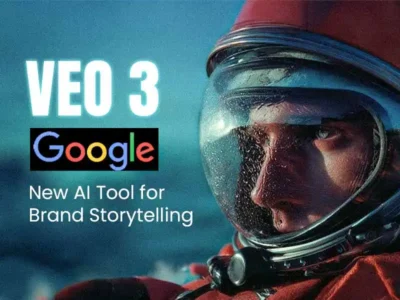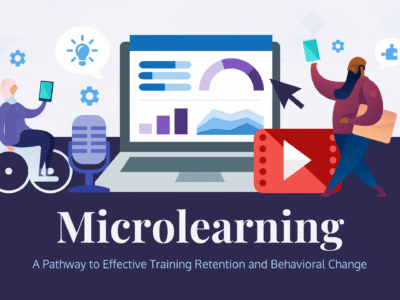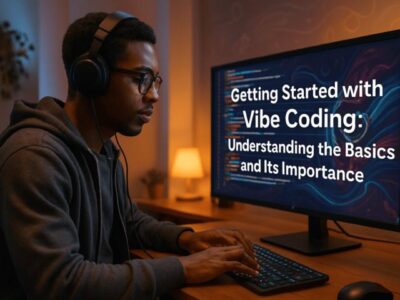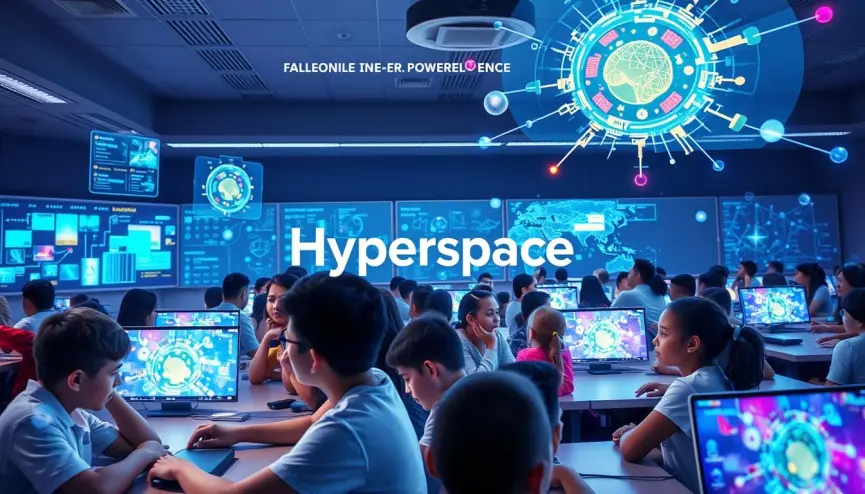FutureLearn: Designing Augmented & Personalized Learning Experiences for the Modern Age
Duration: 6–8 Weeks (or Self-Paced)Level: Intermediate to AdvancedFormat: Video Lectures, Learning Design Templates, Interactive Demos, Case Studies, Reflection Journals, Capstone ProjectTools Used: Adaptive LMS tools, Learning Analytics Dashboards, AI-based EdTech apps, AR/VR demos, Personalization frameworks Course Objective To provide educators, …
Overview
Duration: 6–8 Weeks (or Self-Paced)
Level: Intermediate to Advanced
Format: Video Lectures, Learning Design Templates, Interactive Demos, Case Studies, Reflection Journals, Capstone Project
Tools Used: Adaptive LMS tools, Learning Analytics Dashboards, AI-based EdTech apps, AR/VR demos, Personalization frameworks
Course Objective
To provide educators, instructional designers, and learning professionals with a complete understanding of how to create augmented and personalized learning experiences using emerging technologies, data-driven design, and learner-centric methodologies.
Module 1: The Evolution of Learning in the Digital Age
Topics Covered:
-
From Static Classrooms to Dynamic Ecosystems
-
Understanding Augmented Learning: Beyond Reality
-
What is Personalized Learning? History and Promise
-
Key Drivers: AI, AR, VR, Data, and EdTech
-
Challenges and Opportunities in Next-Gen Learning
Learning Outcome:
Gain foundational knowledge of the technologies and pedagogies driving the shift toward augmented and personalized learning.
Activities:
-
Analyze a traditional course and reimagine it using augmentation principles
-
Reflect on your own learning journey and how personalization could have improved it
Module 2: Principles of Personalized Learning
Topics Covered:
-
The Core Pillars: Pace, Path, Preference, Progress
-
Learner Profiles and Goal-Based Pathways
-
Competency-Based vs Time-Based Models
-
Personalization vs Differentiation vs Individualization
-
Barriers to Personalized Learning and How to Overcome Them
Learning Outcome:
Understand how to design systems that adjust to each learner’s needs, strengths, and motivations.
Activities:
-
Create a sample learner profile and adaptive learning path
-
Use a personalization design template to modify a lesson
Module 3: Augmented Learning with Technology
Topics Covered:
-
What is Augmented Learning? (AR, VR, XR, AI)
-
Immersive Learning with Augmented and Virtual Reality
-
Using AI to Enhance Teaching and Learning
-
Real-Time Feedback and Just-in-Time Interventions
-
Role of Wearables, Sensors, and Haptic Interfaces
Learning Outcome:
Explore tools and platforms that bring immersive and enriched experiences to learners.
Activities:
-
Evaluate an AR/VR learning demo and map its value to a curriculum
-
Design a mini-lesson using augmented content or AI-driven guidance
Module 4: Adaptive Systems and Learning Analytics
Topics Covered:
-
Understanding Adaptive Learning Engines
-
Learning Analytics and Data-Driven Decision Making
-
Using Dashboards to Track Progress and Personalize Paths
-
Real-Time Intervention Systems and Alerts
-
Ethical Use of Learning Data and Privacy Considerations
Learning Outcome:
Leverage adaptive platforms and data to continuously improve learner outcomes.
Activities:
-
Explore a sample analytics dashboard and create an intervention strategy
-
Draft ethical guidelines for data use in a personalized learning system
Module 5: Designing Learner-Centered Experiences
Topics Covered:
-
Universal Design for Learning (UDL) Principles
-
Designing for Autonomy and Motivation
-
Microlearning and Modular Content Strategy
-
Content Personalization Tools and Recommendation Engines
-
Gamification and Behavioral Personalization
Learning Outcome:
Design interactive and inclusive learning paths tailored to each learner’s style and journey.
Activities:
-
Create a modular lesson plan using microlearning segments
-
Build a gamified learner experience based on individual choices
Module 6: Humanizing Learning Through AI & Augmentation
Topics Covered:
-
Role of Chatbots, Digital Tutors, and Virtual Coaches
-
Emotional Intelligence and Sentiment-Responsive Systems
-
Culturally Responsive AI and Inclusivity in Automation
-
Creating Empathy in Tech-Based Environments
-
AI-Powered Peer Interaction and Community Design
Learning Outcome:
Ensure that augmented learning systems remain empathetic, ethical, and inclusive.
Activities:
-
Design a chatbot script for student motivation and feedback
-
Identify cultural or linguistic biases in an existing AI tutor system
Module 7: Case Studies and Global Best Practices
Topics Covered:
-
How Top Platforms Use Augmentation and Personalization (Duolingo, Khan Academy, Coursera)
-
Emerging Models in K-12, Higher Ed, and Corporate Training
-
Case Studies from Finland, Singapore, South Korea, and the USA
-
Lessons Learned from Failures and Limitations
-
Predictions for the Future of Smart Learning Ecosystems
Learning Outcome:
Analyze real-world applications to draw insights and inspiration for your own practice.
Activities:
-
Compare two adaptive learning platforms and write a recommendation
-
Research and present a case study of a school or company using augmented learning
Module 8: Capstone Project – Designing an Augmented & Personalized Learning Experience
Project Description:
Build a full instructional module, lesson, or learning environment that includes elements of:
-
Personalization based on learner data or profiles
-
Augmented or immersive content (AR/VR or simulation)
-
Adaptive assessments and progress tracking
-
Empathy-driven user interface and experience
Deliverables:
-
Instructional design brief and learner profile
-
Personalized content flow or prototype
-
Technology integration map
-
Reflection on ethical and human-centered design choices
Bonus Resources
-
Templates for Personalized Learning Paths
-
Augmented Learning App Directory
-
Learning Analytics Dashboard Samples
-
Ethical Guidelines for AI in Education
-
Toolkits: ChatGPT, ClassDojo, Nearpod, H5P, and more
Teaching Methodology
-
Theory-to-Practice with real examples
-
Interactive reflections and scenario-based challenges
-
Tech demos and guided tutorials
-
Group discussions and peer reviews
-
Final project to apply all modules in an authentic context
Target Audience
-
Educators and trainers redesigning modern learning environments
-
Instructional designers and curriculum developers
-
EdTech entrepreneurs and platform builders
-
School administrators and policymakers
-
Students and professionals passionate about the future of education







